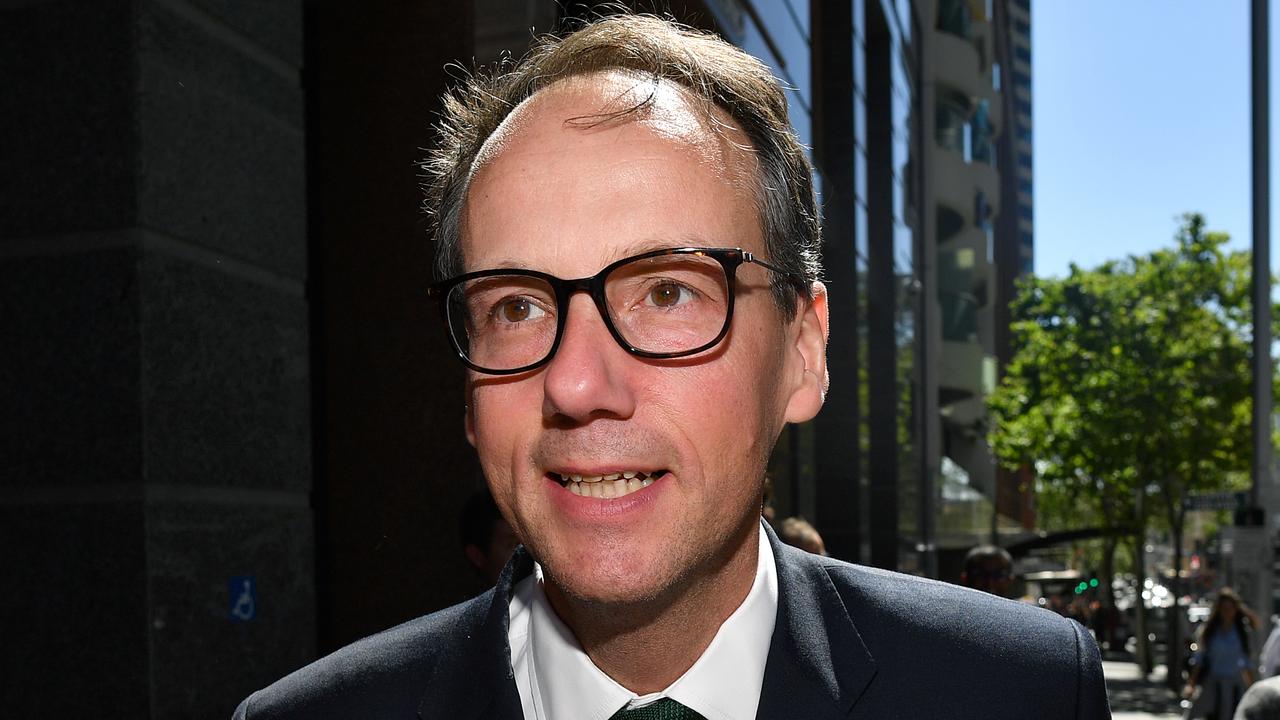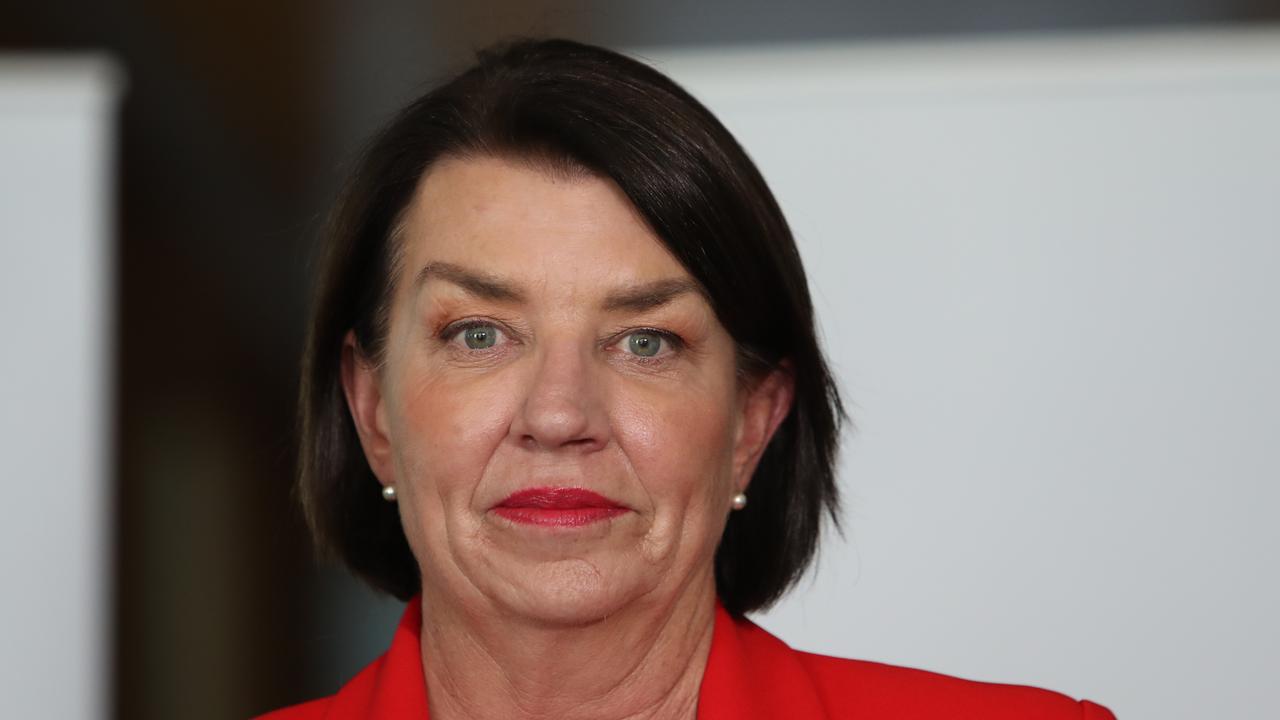Tardy NAB delayed super transfers
National Australia Bank was slow to make a legally required transfer of super money into low-fee accounts.

National Australia Bank was so slow to make a legally required transfer of super money from old high-fee funds into low-fee MySuper products that four years after the reforms were passed the bank still held more than a third of all Australian savings in the fee-gouging products.
Whether NAB’s tardy approach to the MySuper transition was a breach of the bank’s duty to act in the best interest of members was considered in fine detail by the royal commission yesterday as the company faced a gruelling third day of examination.
Appearing at the commission yesterday, Nicole Smith, the chairman of the bank’s superannuation trustee NULIS, insisted the glacial pace — just 5 per cent of assets were transferred every quarter in 2014 and 2015 — was “the right time frame” because of the complexity of the task.
The slow pace at which a number of Australia’s biggest banks moved billions of dollars worth of super assets out of high-fee legacy products and into low-fee accounts, as was required by reforms passed by the Gillard government in 2012, has long drawn criticism from the not-for-profit industry fund sector.
Super funds were given four years to transfer members’ savings out of high-fee legacy products and into low-fee MySuper accounts, up to July last year. While industry funds generally transferred the funds immediately, a number of for-profit super funds took until the eleventh hour of the four-year transition period to transfer these funds, meaning customers paid more in fees and companies potentially booked higher profit margins off customers’ retirement savings.
A report by Rainmaker Information found that retail and bank-owned super funds were collecting between $800 million and $1.8 billion over four years by leaving customer savings in legacy products with higher fees, instead of transferring them to cheaper products.
By 2014, assets trapped in “legacy” products owned by NAB’s super business MLC accounted for $17bn of the $73bn legacy assets across the entire industry.
But while the whole-of-industry figure had shrunk to $41bn over the next two years, NAB had only managed to reduce its amount by $3bn to a total of $14bn.
“MLC super funds had more than a third of the (legacy assets) across the entire superannuation industry,” counsel assisting Michael Hodge, QC, told the royal commission.
“Did that seem striking to you?” Mr Hodge asked NAB’s former superannuation executive Nicole Smith.
“I don’t recall thinking at the time it was striking,” Ms Smith said.
In fact, by mid-2016, NAB was considering further slowing down the transition and not moving across all of the remaining money until March 2017, the royal commission heard.
Superannuation trustees are required by law to act in the best interests of members.
This week, the royal commission has been examining why it took NAB so long — 10 months — to decide whether it should compensate customers for a breach where it charged a so-called “plan service fee” for basic general advice services to superannuation customers who had no financial adviser who could provide those services.
The bank eventually decided to pay more than 200,000 customers slugged with the charge close to $35m — but not until after attempts were made within its wealth management division to find a way to keep charging the fees, the commission has heard.
Ms Smith excused NAB’s tardy transition as “a safe, appropriate” handling of the requirement but admitted that savers would have been paying the plan service fee for longer.
She said savers could also have been slugged with the “adviser contribution fee”, which NAB has been at pains to paint as a “commission” and not a “fee”.
NAB’s former wealth boss Paul Carter this week claimed that even though the fee was called a fee it was actually a commission, which would spare the bank from having to refund customers who did not receive any service in return for paying the fee.
Super trustees are also required to ensure MySuper funds have appropriate economies of scale, but Ms Smith said she couldn’t recall whether the bank considered its MySuper members would have been better off if they were all transferred into the fund, which could bring greater scale.
The royal commission also heard NAB was informed by an independent ratings agency that MLC Super Fund MySuper and the MLC Staff Mysuper funds were ranked 66th and 44th, respectively. This would place the funds among the worst performing in the country.
A report prepared by Chant West found NAB’s funds were not suffering from an inability to invest in high-returning infrastructure, which would increase fund performance.
However, the royal commission heard NAB was very reluctant to forgo profits and provide its super managers with the extra money to invest in higher-earning assets for its members.
Although several documents shown to the royal commission revealed the portfolio managers were unable to meet targeted returns without a larger investment budget, Ms Smith revealed NAB has still not increased the budget since it was warned in August last year.
NULIS paid a dividend of more than $100m a year to NAB, Ms Smith said.
Ms Smith is set to return to the witness stand for a third day this morning, as the commission explores an ongoing Australian Securities & Investments Commission investigation into the fee-for-no-service scandal that could result in the bank facing criminal charges.
She is to be followed by the chief executive of the nation’s biggest super fund, the $140bn AustralianSuper, Ian Silk.
IOOF boss Chris Kelaher and the company’s head of platforms, Mark Oliver, are also to give evidence in coming days.



To join the conversation, please log in. Don't have an account? Register
Join the conversation, you are commenting as Logout